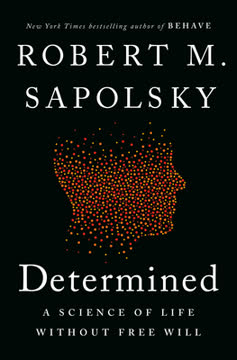Key Takeaways
1. The Space Race: A Cold War competition between superpowers
"We had to demonstrate democracy was a better system under which to live."
Cold War rivalry fueled space exploration. The United States and Soviet Union engaged in a fierce competition to achieve milestones in space exploration, viewing it as a demonstration of technological and ideological superiority. This rivalry drove rapid advancements in rocket technology, spacecraft design, and human spaceflight capabilities.
Key milestones became propaganda victories. Both nations celebrated their achievements as proof of their system's superiority:
- Soviet firsts: First satellite (Sputnik), first man in space (Yuri Gagarin), first spacewalk (Alexei Leonov)
- American firsts: First man on the Moon (Neil Armstrong), extended lunar exploration missions
The space race consumed enormous resources and captured global attention, becoming a powerful symbol of the broader Cold War struggle between capitalism and communism.
2. Pioneering cosmonauts and astronauts push the boundaries of human exploration
"I was walking in space. The first man ever to do so."
Early space explorers faced unknown dangers. Cosmonauts and astronauts volunteered for missions that pushed the limits of human endurance and technology. They confronted risks such as:
- Extreme G-forces during launch and reentry
- Potential equipment failures in the vacuum of space
- Psychological stress of isolation and confinement
- Physiological effects of weightlessness
Personal courage and national pride motivated these pioneers. Many were military test pilots accustomed to high-risk flying. They viewed their missions as a duty to their country and a chance to make history. The intense public attention and hero status afforded to successful space travelers added to the allure of these dangerous missions.
3. Tragedy and triumph: The human cost of space exploration
"We lost the crew."
Fatal accidents highlighted the risks of spaceflight. Both the American and Soviet space programs suffered tragic losses:
- Apollo 1 fire (1967): Gus Grissom, Ed White, and Roger Chaffee
- Soyuz 1 crash (1967): Vladimir Komarov
- Soyuz 11 depressurization (1971): Georgy Dobrovolsky, Vladislav Volkov, and Viktor Patsayev
Each disaster led to program delays and safety improvements. Investigations into these accidents resulted in significant changes to spacecraft design, mission protocols, and training procedures. The losses were deeply felt by the close-knit astronaut and cosmonaut communities, but also strengthened their resolve to continue the exploration of space.
4. The evolution of spacecraft technology and mission complexity
"Apollo was a very, very complex program. No one had ever designed a vehicle to go to the Moon before."
Rapid technological advancements enabled increasingly ambitious missions. The progression from early suborbital flights to lunar landings required continuous innovation:
- Spacecraft design: From simple capsules to complex multi-module vehicles
- Life support systems: Extended mission durations from hours to weeks
- Propulsion: Powerful rockets capable of escaping Earth's gravity
- Navigation and control: Precise guidance for lunar trajectories and landings
Mission complexity grew exponentially. Later Apollo missions incorporated:
- Lunar rovers for extended surface exploration
- Advanced scientific experiments and sample collection
- Longer duration stays on the lunar surface
These technological leaps laid the groundwork for future space exploration, including space stations and interplanetary missions.
5. Intensive training and preparation for space missions
"We simulated every possible aspect of the mission."
Astronauts and cosmonauts underwent rigorous training regimens. Preparation for space missions involved:
- Physical conditioning: Endurance training, exposure to G-forces
- Technical systems knowledge: Mastering spacecraft controls and procedures
- Emergency scenario practice: Simulating equipment failures and contingencies
- Scientific training: Geology instruction for lunar missions
- Survival skills: Preparing for off-target landings
Specialized facilities replicated space conditions. Training tools included:
- Neutral buoyancy tanks for simulating weightlessness
- Centrifuges for high G-force exposure
- Motion simulators replicating spacecraft behavior
- Lunar landing training vehicles
This comprehensive preparation was crucial for mission success and crew safety in the unforgiving environment of space.
6. The psychological and physical challenges of spaceflight
"We felt sweat accumulating in drops on my face and running down under the collar of my shirt."
Spaceflight presented unique stresses on the human body and mind. Astronauts and cosmonauts faced:
- Physiological adaptations: Bone and muscle loss in microgravity
- Sensory disorientation: "Space sickness" and balance issues
- Psychological pressure: High-stakes decision-making and public scrutiny
- Isolation: Limited communication with Earth and confined living spaces
Overcoming these challenges required mental fortitude and teamwork. Crew selection emphasized not only technical skills but also psychological resilience and the ability to work effectively in small teams under extreme conditions.
7. Scientific discoveries and geological exploration on the Moon
"We would have to rely on instinct and training in picking a sample and would have only about five seconds to look at it, and maybe ten seconds to describe it, before bagging it and moving on."
Lunar missions yielded valuable scientific data. Apollo astronauts conducted experiments and collected samples that provided insights into:
- The Moon's geological history and composition
- The formation of the Earth-Moon system
- The early solar system
Geological training became increasingly important. Later Apollo missions emphasized scientific exploration:
- Astronauts received extensive geology instruction
- Lunar rovers enabled wider exploration of landing sites
- Sample collection and on-site analysis techniques were refined
These scientific endeavors transformed our understanding of the Moon and laid the foundation for future planetary exploration.
8. International cooperation and rivalry in space
"I believe now, and believed at the time, that had the men responsible for the second act witnessed the first—an American citizen taking the first steps on the surface of the Moon—they would never have dared to carry out such evil."
Space exploration fostered both competition and collaboration. While the Space Race was driven by Cold War rivalries, it also led to moments of international goodwill:
- Astronauts and cosmonauts developed mutual respect and friendships
- Scientific data was shared between nations
- The Apollo-Soyuz Test Project (1975) demonstrated joint operations
Space achievements transcended national boundaries. The Moon landing was celebrated as a human achievement worldwide, despite being an American accomplishment. This global perspective on space exploration laid the groundwork for future international collaborations like the International Space Station.
9. The legacy of early space missions and their impact on future exploration
"Kennedy's deadline had been met. We'd beaten the Russians. As Kennedy had said, it was the Soviet Union that had chosen space as the arena in which to demonstrate the superiority of its system. But we had shown them our system was better."
Early space missions inspired future generations. The achievements of the 1960s and early 1970s:
- Demonstrated the possibility of human spaceflight beyond Earth orbit
- Drove technological innovations with wide-ranging applications
- Captured the public imagination and inspired STEM education
Lessons learned shaped future space programs. The successes and failures of early missions influenced:
- Spacecraft design and safety protocols
- Mission planning and risk assessment
- International cooperation in space exploration
The Apollo program, in particular, set a benchmark for ambitious space exploration goals, influencing later programs aimed at Mars exploration and establishing a permanent human presence in space.
Last updated:
Review Summary
Two Sides of the Moon offers a unique dual perspective on the Space Race from American astronaut David Scott and Soviet cosmonaut Alexei Leonov. Readers appreciate the insider's view of both space programs, especially the rare glimpse into Soviet efforts. The book provides fascinating accounts of space missions, near-disasters, and the eventual cooperation between the two nations. While some found the ending less engaging, most reviewers praised the book's personal stories, historical context, and ability to convey the excitement and dangers of early space exploration. It's highly recommended for space enthusiasts and history buffs alike.
Similar Books
Download PDF
Download EPUB
.epub digital book format is ideal for reading ebooks on phones, tablets, and e-readers.






